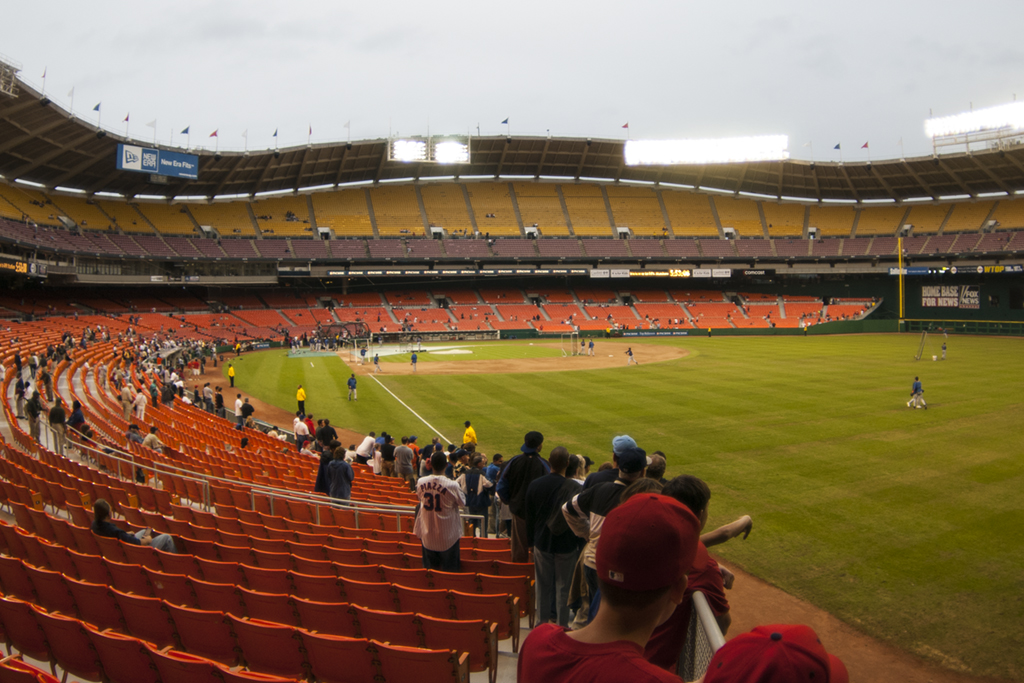The future of RFK Stadium, former home of the Washington Senators and the Washington Nationals, will be discussed in two public meetings in coming months.
When MLS’s D.C. United moves to a new soccer-specific stadium in a few years, the facility will lack a full-time tenant for the first time. D.C. United has played there since 1996, the Washington Redskins played there from 1961 through 1997, the Washington Senators played there 1962-1971 and the Washington Nationals played there from 2005 to 2007.
We have a fuller look at all the issues on our sister site, Soccer Stadium Digest, so we’ll refer you there for what’s happening in Capitol Hill. Instead, we’ll look at the facility’s baseball history here.
RFK Stadium opened in October 1961 as the home of the Redskins and the American League’s Washington Senators, replacing the aging Griffith Stadium on the local sporting scene. Renamed RFK Stadium in 1969, the original District of Columbia Stadium (
The expansion Washington Senators opened the 1962 season at
The expansion Senators, who entered the American League after the original Senators moved to Met Stadium and became the Minnesota Twins, had three sets of owners, including Minneapolis hotelier Short. The team’s farm system wasn’t half-bad — developing players like Ed Brinkman, Del Unser and Joe Coleman — but the better players were traded away as Short and his predecessors struggled with finances and a 10-year RFK Stadium lease.
As a manager, Ted Williams was fairly successful: in his first season, 1969, he guided the Senators to an 86-76 fourth-place finish in the American League East. There was some decent talent on the squad, including the aforementioned Howard (who blasted 48 homers that season), Mike Epstein (with 30 homers) and pitcher Dick Bosman. But that success didn’t last, and after four seasons Williams called it quits.
And it looks like the District of Columbia will call it quits on RFK Stadium when the last tenant leaves. While some sort of park space will replace it — the site is owned by the National Park Service — it’s virtually a certainty that RFK Stadium will be torn down once D.C. United leaves. And while there weren’t that many great moments there during the baseball season, it’s still sad to see a former MLB ballpark go down.


